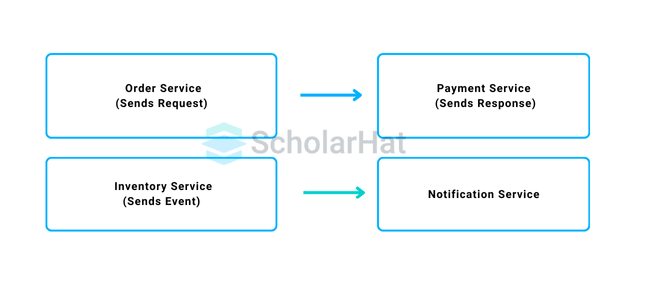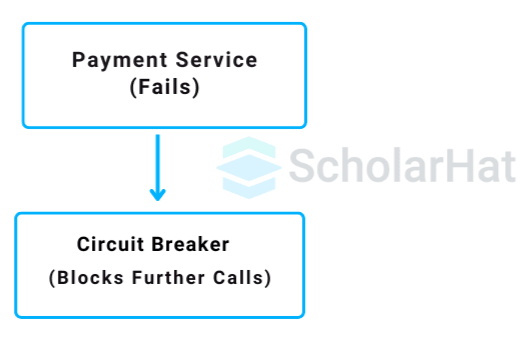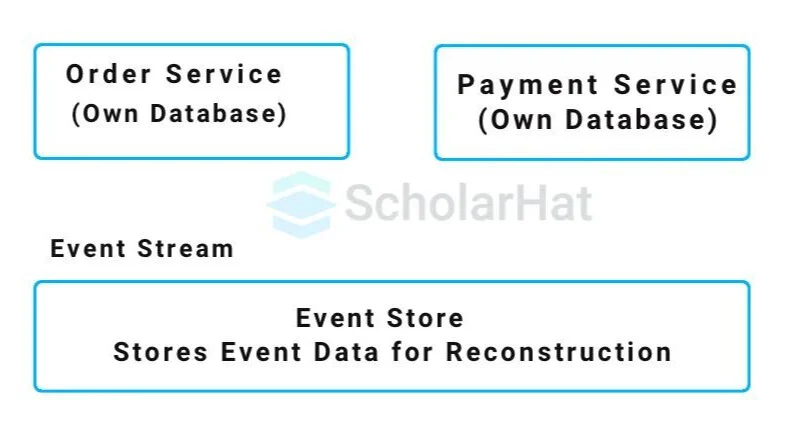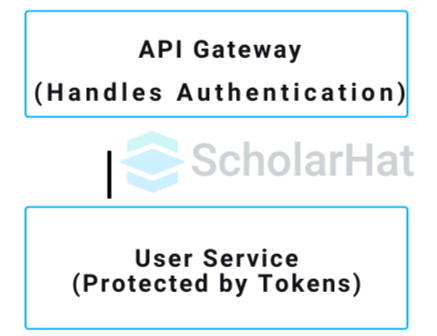18
AprUnderstanding Microservices Design Patterns
Microservices design patterns
Microservices Design Patterns are essential in designing scalable, reliable, and flexible distributed systems. My goal here is to help you understand how these patterns enable developers to accelerate application releases. You can deploy each microservice independently as needed.
In this design pattern tutorial, we will explore various Microservices Design Patterns, discussing "What are Microservices Design Patterns?" and "When should I use Microservices Design Patterns?". Along the way, I will share practical examples to help you understand how these patterns work in real-world scenarios. Let’s begin by understanding what Microservices Design Patterns are.
What are Microservices Design Patterns?
- Microservices design patterns are software patterns for creating reusable autonomous services.
- These patterns provide solutions to common challenges in microservices architecture, such as communication between services, service discovery, and data consistency, enabling efficient development and management of independent services.
- With various design patterns available, you can choose the right one based on business requirements and other relevant considerations.
Benefits of using microservices architecture patterns
- Microservices design patterns help maximize the benefits of microservices by enabling easy scalability and allowing services to be replicated and distributed quickly.
- They simplify managing remote data and facilitate communication between different systems.
- Design patterns solve common issues in microservices architecture, such as reducing complexity and improving service management.
- Integration patterns improve how services interact with each other, making the architecture more efficient.
- Independent operation of services increases security and makes the system more resilient to failures.
Types of Microservices Design Patterns
- Decomposition Design Patterns
- Communication Design Patterns
- Resilience Design Patterns
- Observability Design Patterns
- Data Management Design Patterns
- Security Design Patterns
1. Decomposition Design Patterns
Decomposition patterns are focused on separating huge, monolithic systems into smaller, more manageable microservices. This breakdown assures that separate services can expand, develop, deploy, and maintain themselves. These patterns work to align microservices with business requirements better, increasing flexibility and scalability.
Key Patterns
- Service per Business Capability
- This pattern splits the system based on the core business capabilities.
- You can split the system based on core business capabilities.
- For instance, in an e-commerce system, you might have separate services for orders, payments, and customer profiles.
- How does this help? It simplifies maintenance and scaling as your business evolves.
- Service per Subdomain
- Following the principles of domain-driven design (DDD), services are created based on subdomains of the business.
- This ensures that each microservice aligns closely with a specific area of the business, making it easier to handle changes within a domain.

Explanation
- In this diagram, the E-commerce System is decomposed into smaller, independent services like Payment Service and Order Service, ensuring that each service can be developed and scaled independently.
Benefits
- Independent scaling of services based on business needs.
- Easy maintenance and updates to services.
- Faster development and deployment cycles due to focused functionality.
2. Communication Design Patterns
Once services are decomposed, they need a way to communicate with each other to function as part of a larger system. Communication patterns address how these microservices interact, ensuring efficient data exchange and maintaining loose coupling between services. Effective communication is key to building robust microservices systems.
Key Patterns
- Request/Response
- This is the most common pattern in which one service sends a request, and another service responds.
- It is typically implemented using HTTP, REST, or gRPC. While simple and widely supported, this pattern can lead to tight coupling if not managed carefully.
- Event-Driven Communication
- In this pattern, microservices communicate asynchronously through events.
- When a service performs an action, it emits an event that other services can consume.
- This decouples the services and allows for more flexible communication.

Explanation
- In the first example, Order Service communicates with Payment Service using a traditional request/response mechanism.
- In the second case, the Inventory Service sends an event asynchronously to the Notification Service, illustrating the flexibility of event-driven communication.
Benefits
- Enables asynchronous communication, improving system flexibility.
- Helps avoid bottlenecks in synchronous communication.
- Enhances scalability by decoupling services.
3. Resilience Design Patterns
Resilience patterns try to ensure that the system can continue to function even in the face of failure. Every distributed system faces failures, and resilience patterns focus on ensuring your system continues to function even when issues arise.
Key Patterns
- Circuit Breaker
- This pattern monitors the communication between services and prevents continuous calls to a failing service.
- When a service fails, the circuit is "opened," and subsequent calls are prevented until the service is stable again. This prevents cascading failures in the system.
- Retry Pattern
- This pattern involves retrying a failed operation automatically after a certain interval.
- It ensures that transient issues, such as temporary network outages, do not cause permanent failure of operations.

Explanation
- In this scenario, a Circuit Breaker is used to block calls to the Payment Service after repeated failures, ensuring the rest of the system remains operational.
Benefits
- Prevents system overload and cascading failures.
- Helps ensure smooth recovery from service failures.
- Improves overall system resilience and availability.
4. Observability Design Patterns
Observability is crucial for maintaining and monitoring microservices, especially in complex systems where multiple services interact. Observability patterns provide ways to monitor, trace, and log service activities, making it easier to detect, diagnose, and resolve issues.
Key Patterns
- Log Aggregation
- In microservices, each service generates logs independently.
- The Log Aggregation pattern involves centralizing these logs to provide a unified view of the system.
- This makes debugging and monitoring much easier.
- Distributed Tracing
- Distributed tracing is used to track the flow of requests as they pass through different services in a microservices architecture.
- It helps identify where delays or failures are occurring.

Explanation
- Each microservice logs its activities, which are then collected by a centralized Log Aggregation system.
- This ensures that developers can monitor and debug the system efficiently.
Benefits
- Improves visibility into the health of the system.
- Simplifies debugging and troubleshooting.
- Helps track performance and identify bottlenecks.
5. Data Management Design Patterns
Managing data can be complex in a microservices architecture, especially when each service needs to access and update data independently. Data Management patterns ensure efficient data handling without compromising consistency.
Key Patterns
- Database per Service
- In this pattern, each microservice has its own database.
- This ensures loose coupling between services and allows them to scale independently.
- However, maintaining data consistency across multiple databases can be challenging.
- Event Sourcing
- Instead of storing the current state of the data, this pattern stores all changes (events) that have occurred to the data.
- The system can then reconstruct the current state by replaying these events.
- This allows for better tracking and auditing of data changes.

Explanation
- Each microservice (e.g., Order Service and Payment Service) has its own database, ensuring independence.
- Additionally, an Event Store captures all changes, enabling event sourcing.
Benefits
- Enables each service to manage its data independently.
- Enhances scalability by decoupling services at the data level.
- Provides a historical record of all changes through event sourcing.
6. Security Design Patterns
Security is a critical concern in any microservices architecture, especially since services are often exposed to external users. Security patterns provide mechanisms to secure communication between services, authenticate users, and protect sensitive data.
Key Patterns
- Access Token
- This pattern ensures that only authorized users or services can access specific resources by requiring access tokens.
- OAuth is a common implementation of this pattern, where users receive tokens after authentication to access services.
- API Gateway Security
- The API Gateway serves as the central point of access to the microservices architecture.
- It handles authentication, authorization, and rate limiting before forwarding requests to the appropriate service.
- This adds an extra layer of security and simplifies the security model.

Explanation
- The API Gateway acts as a secure entry point, ensuring that only authorized users with valid tokens can access the User Service.
Benefits
- Ensures secure communication between services.
- Protects sensitive data and resources.
- Centralizes security management, simplifying implementation.
Summary
Microservice Design Patterns are important for building scalable and reliable systems. They help solve problems like how services communicate, find each other, and keep data accurate. Key patterns include decomposition patterns for breaking big systems into smaller parts, communication patterns for smooth interaction between services, resilience patterns for handling failures, observability patterns for monitoring and debugging, data management patterns for handling data efficiently, and security patterns for keeping services safe. These patterns improve flexibility and accelerate development in microservices architectures. To master design patterns, enroll in ScholarHat's Master Software Architecture and Design Certification Training.








